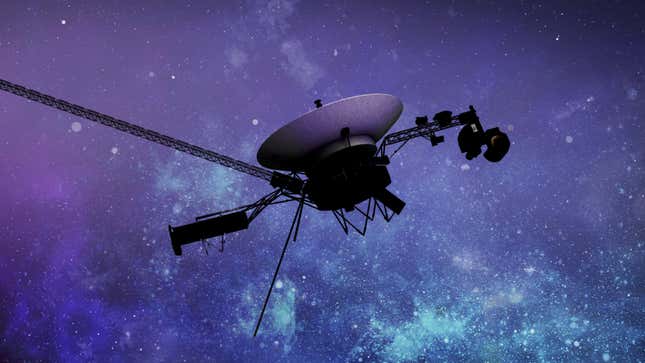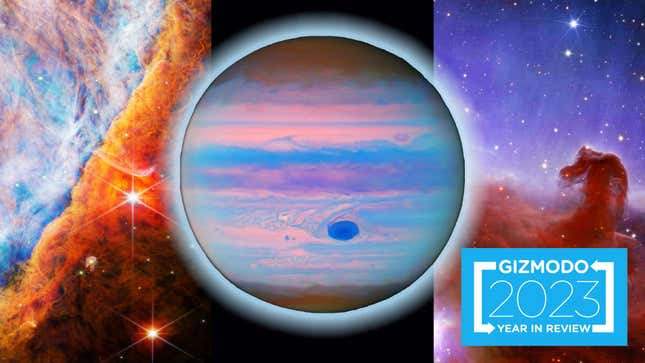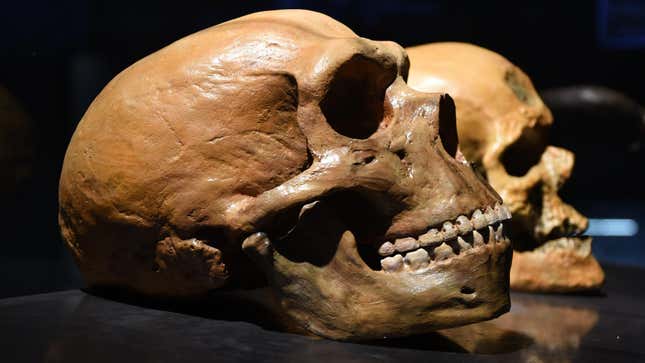Space is hard, as the cliché reminds us, and that was plenty clear this week, as several groups ran into trouble: NASA with its aging Voyager 1 spacecraft, AstroForge with a struggling debut mission to prove asteroid mining can work, and a few missing-in-action satellites from a recent SpaceX launch. Back on Earth, doctors issued a dire warning against holding in a sneeze. – Rose Pastore
Trump Went Through Twitter Withdrawal
NASA’s Voyager 1 Spacecraft Is Speaking Gibberish

NASA’s iconic space probe is having trouble communicating with its home planet due to a computer glitch, forcing engineers to resort to decades-old manuals to come up with a way to fix the 46-year-old mission. – Passant Rabie Read More
The Best Space Images of 2023

Space is an inky black yonder… but for the countless light sources that pepper the billions of light-years that human instruments can see. Thanks to ground-based telescopes and observatories parked millions of miles from Earth, 2023 has been a terrific year for space imagery. Astronomers captured fascinating new views of globular clusters, star systems, and even the planets in our own cosmic backyard. Click through to see our favorite space images from this year. – Isaac Schultz Read More
Something Unearthly Could Switch Train Signals From Red to Green

Some train track circuits are at the mercy of distant storms on the Sun’s surface, researchers found, which could cause train signals to jump from red to green and vice versa as a result of extreme space weather. – Isaac Schultz Read More
Asteroid Mining Startup Runs Into Trouble in First Mission

Since launching its first test mission to vaporize bits of an asteroid in space, AstroForge has struggled to keep a hold of its spacecraft and is now at risk of losing the ability to send commands to the in-orbit demonstration. – Passant Rabie Read More
Latest Obesity Drug Really Does Keep the Weight Off—If You Keep Taking It

New research shows that tirzepatide, the latest FDA-approved obesity drug, really can help people lose substantial amounts of weight—but only if they continue taking it. The study found that people who stopped taking tirzepatide after 36 weeks regained much of their lost weight within a year, while those who continued to take it lost even more, about 25% of their original weight on average. – Ed Cara Read More
Three Satellites From SpaceX’s Latest Rideshare Mission Are Missing in Action

Among the over 100 satellites that launched on board SpaceX’s Transporter-9 mission, three failed to deploy and their current whereabouts are unknown. – Passant Rabie Read More
Key Ingredient for Life Spotted on Saturn’s Ocean Moon

Good news, everyone! Scientists discovered additional evidence suggesting the potential habitability of a peculiar icy moon orbiting Saturn, one of the planet’s 146 moons. – Passant Rabie Read More
Man Holds in Sneeze, Rips Open His Windpipe

Here’s a scary lesson about why you shouldn’t hold in your sneezes. In a case report this month, doctors in the UK describe a man in his 30s who tore open his windpipe by holding his nose and mouth closed while sneezing—apparently the first documented instance of such an injury. Though the man did have to spend some time in the hospital, he fortunately made a speedy recovery. – Ed Cara Read More
Neanderthal Genes Could Explain Why Some of Us Are Morning People

If you’re irritated by the morning people in your life, you might have Neanderthals to blame for their existence, at least a little bit. New research suggests that our hominin relatives possessed genetic variations that predisposed them to waking up early and that they passed on these genes to our Homo sapiens ancestors through interbreeding. The study also found evidence that some people today still carry that genetic legacy with them. – Ed Cara Read More






